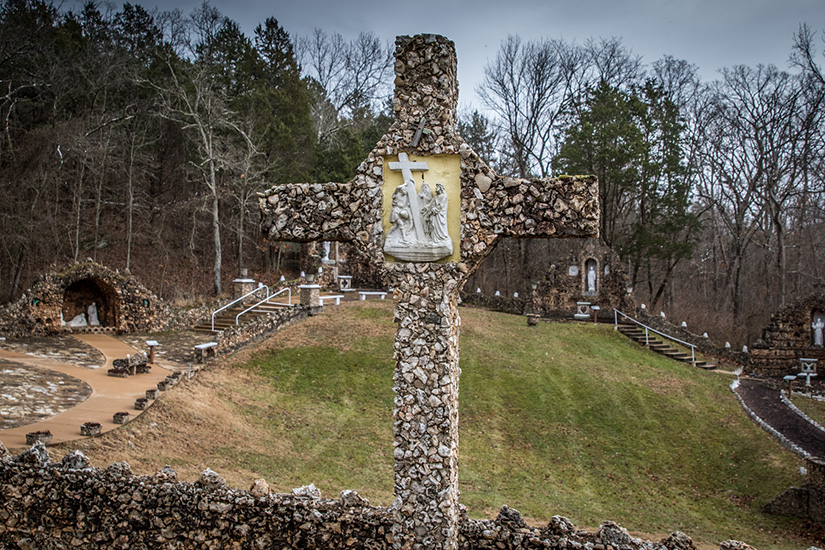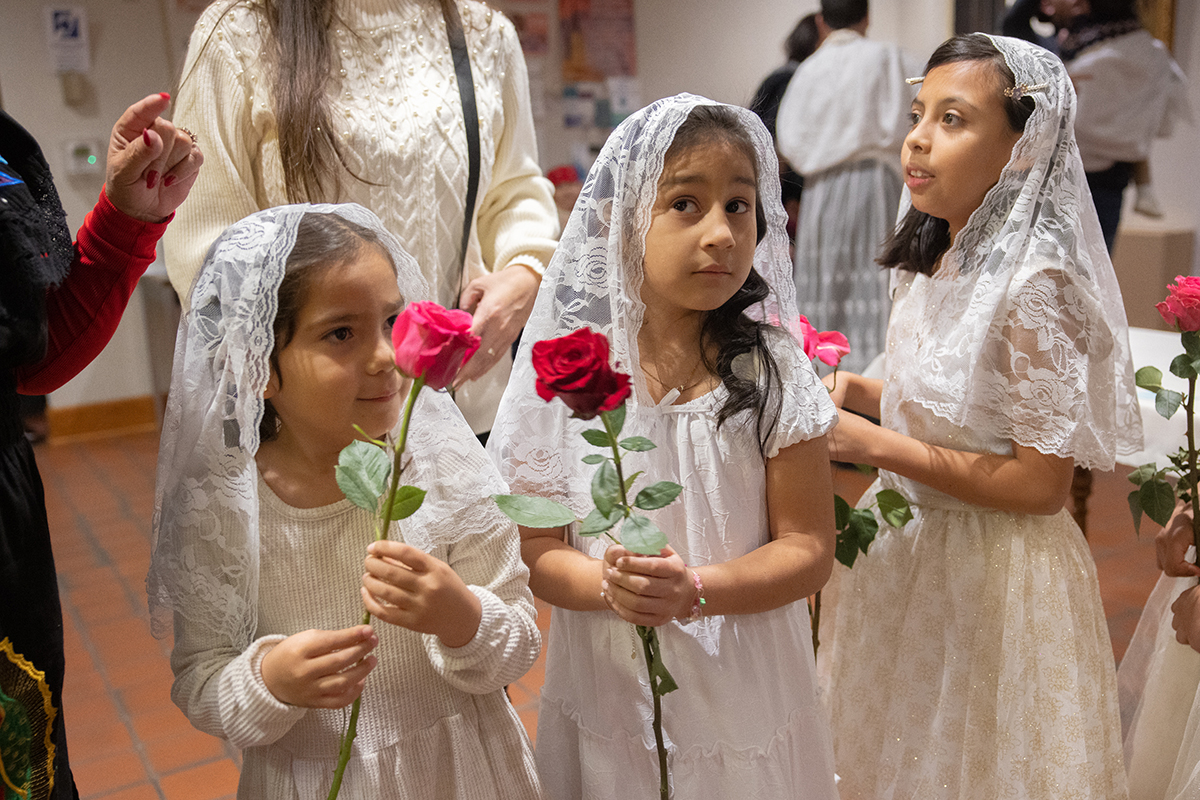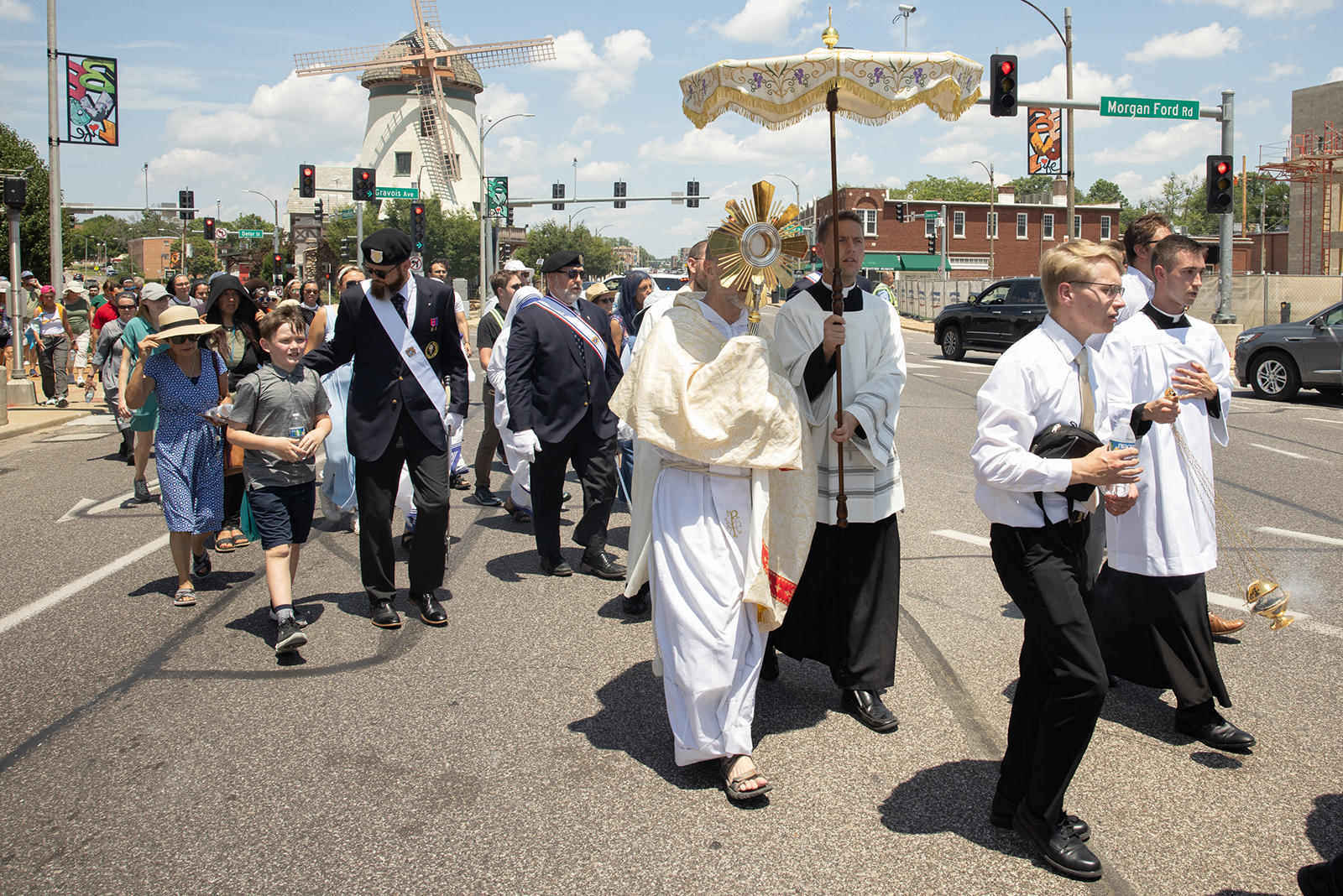Black Madonna Shrine is a perfect location to listen to God in solitude

Shrine, grottos near Eureka open to the public every day
Finding solitude — especially during the hustle of preparing for Christmas — might seem an impossible task. But in following the ways of St. Francis of Assisi, it is quite achievable, especially when given the space to do so.
The Black Madonna Shrine just outside Eureka has been a place of solitude for many over the years. Started by the Franciscan Missionary Brothers of the Sacred Heart of Jesus in 1937, the shrine and grottos — featuring a shrine to Our Lady Czestochowa, the Black Madonna — are nestled on a small parcel within 200 acres owned by the brothers, and surrounded by three conservation areas near Labarque Creek.
People who come here seek to get away from the busyness of the city, to pray and reflect. They often find God speaking to the depths of their hearts. St. Francis experienced this when seeking moments of solitude as he preached the Gospel to others. He often traveled the countryside, stopping to pray at wayside chapels. At San Damiano near Assisi, he saw an image of the crucified Christ and heard God tell him to repair His Church.
“Francis was a person that valued serving in silence. He was a very simple person, very nature loving,” said Brother John Spila OSF, one of two Franciscan Missionary Brothers in St. Louis. The Black Madonna Shrine was built in devotion to Mary, “but also to offer a place of solitude and tranquility, where people can come and share with God their concerns and hopefully get some answers.”
In 1927, Cardinal John J. Glennon invited six brothers here from Poland, including Brother Bronislaus Luszcz. They settled on land 35 miles west of St. Louis in wooded hills near what is now Eureka and Pacific. Brother Bronislaus led the efforts to clear the land without the help of machinery. The brothers had a small farm that produced food for the infirmary and brothers.

In 1937, Brother Bronislaus cleared his favorite spot in the woods and built a cedar chapel with a painting of Our Lady of Czestochowa, or Black Madonna, which was widely known in his homeland of Poland. In his spare time, he built grottos made of discarded barite rock from Old Mines, Mo. It became his full-time occupation in the early 1950s.
Shrine director Mike Scully said that visitors appreciate the work of Brother Bronislaus, including grottos featuring statues of St. Francis, St. Joseph, Our Lady of Perpetual Help, Jesus and the disciples at Gethsemane, Our Lady of Sorrows, Mary’s Assumption, and the Nativity. Brother Bronislaus died from heat stroke in 1960 while working on his final project, a grotto to Our Lady of Fatima. In the mid-1960s, an open-air chapel dedicated to Our Lady of Czestochowa and featuring a wall of multi-colored mosaics, replaced the original cedar chapel. A museum with artifacts and artwork from the brothers is anticipated to open in the spring of 2019.
“People who visit here tell us stories of how God has helped them in their lives,” said Scully, whose now-deceased uncle, Brother Paschal Scully, was a Franciscan Missionary Brother. “There are people who come out here — and let’s just say that good things happen to them. There’s a sense of calm and peace.”
Brother Spila said he encourages everyone to visit and “sit and listen to the quietness. There’s no hustle and bustle around the shrine. It’s a place to be with nature … and just reflect on what you have or what your problems are — to release the pressures of the outside world.”
Reflection questions
• Where do I find God’s presence in my everyday activities?
• In what ways am I helping God build His Church?
• What is one thing I can do to improve my relationship with God?
• What is the biggest time-waster in my life, and what will I do to break that habit in the coming year?
• Name one person for whom to pray in the coming year, and make a plan to continue to hold that person in prayer.
• What is standing between me and my biggest goal, and what can I do to achieve that goal, with God’s help?
Black Madonna Shrine
LOCATION: 265 St. Joseph Hill Road in Pacific
HOURS: May-September 9 a.m.-7 p.m.; April and October 9 a.m.-6 p.m.; November-March 9 a.m.-4 p.m.
COST: Admission to the site is free. Charitable donations are appreciated.
CONTACT: www.franciscancaring.org; (636) 938-5361; or shrine1olc@aol.com
Reading resources
Franciscan Media: info.franciscanmedia.org
“Surrounded by Love: Seven Teachings from Saint Francis,” by Murray Bodo, OFM; Franciscan Media, 2018
“Live Like Francis: Reflections on Franciscan Life in the World,” by Leonard Foley, OFM, and Jovian Weigel, OFM; Franciscan Media, 2016
“Silent Compassion: Finding God in Contemplation,” by Richard Rohr; Franciscan Media, 2014
“Prayer: Our Deepest Longing,” by Ronald Rolheiser; Franciscan Media, 2013
Finding solitude — especially during the hustle of preparing for Christmas — might seem an impossible task. But in following the ways of St. Francis of Assisi, it is quite … Black Madonna Shrine is a perfect location to listen to God in solitude
Subscribe to Read All St. Louis Review Stories
All readers receive 5 stories to read free per month. After that, readers will need to be logged in.
If you are currently receive the St. Louis Review at your home or office, please send your name and address (and subscriber id if you know it) to subscriptions@stlouisreview.com to get your login information.
If you are not currently a subscriber to the St. Louis Review, please contact subscriptions@stlouisreview.com for information on how to subscribe.





